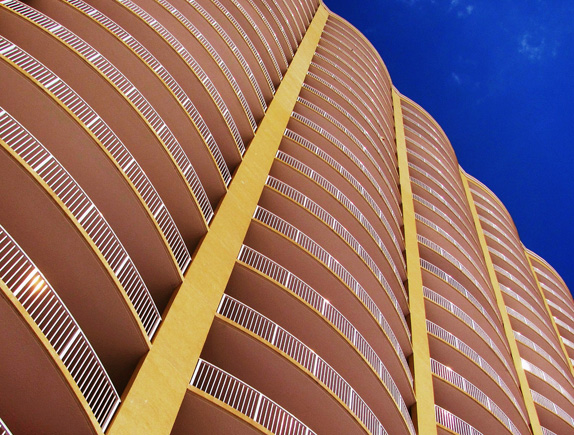A NASA spacecraft intentionally slammed into a stadium-sized asteroid987 ArchivesSept. 26 — possibly giving the space rock its worst day of the last 1,000 years — and then the paparazzi showed up.
LICIACube, a satellite the size of a breadbox provided by the Italian Space Agency, arrived on the scene of the crash three minutes later, taking pictures of the impact and debris plume. The images, combined with data from a follow-up European space mission, will help scientists prepare to intervene if an asteroid ever threatens to hit the planet in the future.
It took less than 24 hours for the first images from LICIACube (Light Italian CubeSat for Imaging of Asteroids) to be returned and processed. The Italian agency released before and after shots on Sept. 27, showing the dramatic flash produced by NASA's DART mission. Many more images are expected to follow over the coming days and weeks.
This Tweet is currently unavailable. It might be loading or has been removed.SEE ALSO: Boom! NASA just slammed into an asteroid and filmed the crash
The 1,300-pound NASA spacecraft self-destructed by ramming into a harmless asteroid shortly after 7 p.m. ET on Sept. 26. The high-speed crash was in the name of planetary defense, part of the U.S. space agency's Double Asteroid Redirection Test, or DART.
It was the first time in history humans have ever tried to alter the path of an asteroid, a flying chunk of rubble left over from the formation of the solar system about 4.6 billion years ago. Scientists are monitoring the orbits of 30,000 large objects in the solar system that travel near to Earth (within 30 million miles) and estimate there could be 15,000 more waiting to be discovered.
Most of the time, these ancient rocks pose no danger to Earth, including Dimorphos, the one NASA just used for target practice about 6.8 million miles away. But at least three have caused mass extinctions, the most infamous of which wiped out the dinosaurs.
Want more scienceand tech news delivered straight to your inbox? Sign up for Mashable's Top Stories newslettertoday.
Scientists won't know for sure whether they achieved their main goal of moving Dimorphos for a couple of months. They must analyze its new trajectory and speed with ground-based telescopes around the world.
"I don't think any of us named the spacecraft."
From the beginning, the spacecraft headed toward the egg-shaped rock was destined to be destroyed. For that reason, the mission operations team at Johns Hopkins Applied Physics Laboratory in Laurel, Maryland, tried to never get too attached to their flying machine. They cheered when they lost its signal.
"I don't think any of us named the spacecraft," said Ed Reynolds, project manager at the laboratory.
Check out the before and after views, side by side. The images show Dimorphos, a moonlet orbiting a larger asteroid named Didymos, getting super bright post-collision.
 Left:Before the crash. Credit: ASI / NASA Right:After the crash. Credit: ASI / NASA
Left:Before the crash. Credit: ASI / NASA Right:After the crash. Credit: ASI / NASA This Tweet is currently unavailable. It might be loading or has been removed.
Fifteen days prior to the collision, the spacecraft deployed LICIACube, which has its own propulsion system, an autonomous tracking system, and two cameras, nicknamed Luke and Leia to document the impact of the, er, impact.
During a press conference on Sept. 27, Elisabetta Dotto, LICIACube science team lead, said in Italian that the little flying instrument trolling the collision site is already revealing itself to be a scientific success.
 Skywatching is lit in May, says NASA
Skywatching is lit in May, says NASA
 'Succession' Season 4, episode 5: The 'kill list' explained
'Succession' Season 4, episode 5: The 'kill list' explained
 As protests spread, misinformation in Facebook Groups tears small towns apart
As protests spread, misinformation in Facebook Groups tears small towns apart
 Virtual internships and the Zoom skills you don't learn in college
Virtual internships and the Zoom skills you don't learn in college
 Alienware M16 Gaming Laptop deal: Save $560
Alienware M16 Gaming Laptop deal: Save $560
 TPR vs. High Times: The Stoners Win by Cody Wiewandt
TPR vs. High Times: The Stoners Win by Cody Wiewandt
 Like Minds by Sadie Stein
Like Minds by Sadie Stein
 Larger than News; Professional M.F.A. People by Lorin Stein
Larger than News; Professional M.F.A. People by Lorin Stein
 Amazon Spring Sale 2025: Best deals on cleaning supplies
Amazon Spring Sale 2025: Best deals on cleaning supplies
 It's OK to post on social media even though you haven't replied to texts
It's OK to post on social media even though you haven't replied to texts
 AOC drags White House press secretary for calling her 'Biden advisor'
AOC drags White House press secretary for calling her 'Biden advisor'
 Father's Day; Church Going by Lorin Stein
Father's Day; Church Going by Lorin Stein
 Jamey Gambrell on Vladimir Sorokin by Nicole Rudick
Jamey Gambrell on Vladimir Sorokin by Nicole Rudick
 Best Kindle Unlimited deal: Get 3 months of Kindle Unlimited for 99 cents
Best Kindle Unlimited deal: Get 3 months of Kindle Unlimited for 99 cents
 Dyson Airwrap vs. Shark FlexStyle: Which is worth your money
Dyson Airwrap vs. Shark FlexStyle: Which is worth your money
 Paradise Lost by Vanessa Blakeslee
Paradise Lost by Vanessa Blakeslee
 A Week in Culture: Chris Weitz, Director by Chris Weitz
A Week in Culture: Chris Weitz, Director by Chris Weitz
 SpaceX's Starlink satellite launch in pictures
SpaceX's Starlink satellite launch in pictures
 The Editors on Reading Mojo and Friend Dumping
The Editors on Reading Mojo and Friend Dumping
Slack's redesigned mobile apps are less likely to make you bang your head against a wallSigns you're suffering from Trump Fatigue SyndromeFacebook Messenger Rooms arrive in the U.S., Mexico, and CanadaGuy Fieri and Bill Murray are having a nacho cookAmazon to sell its own face shields and this is normal nowElon Musk thanks Trump for supporting Tesla factory reopeningBritish students create memes to vent about a ridiculous biology exam questionLiv Little on galSpaceX has released a Crew Dragon simulator, so you can endure the terror of space from homeHBO partners with Scener to create coTikTok faces scrutiny over minors' user data ... againHere's Celine Dion in a 'Bye Felicia' hoodieFirst two ‘Tony Hawk’s Pro Skater’ games return in a faithful remasterDave Chappelle takes back what he said about Donald TrumpTim Kaine becomes an unlikely cowboy antiAll 201 episodes of 'The Office' will be recreated on SlackWhat's the best teen movie of all time?Sleeping woman being wheeled around campus is truly a bizarre sightAmazon's proposed federal antiJoe Biden, president of ice cream, is finally getting his own flavor Janet Fish: Glass & Plastic Where Is Dracula Really From, Anyway? Translating Tranströmer: An Interview with Patty Crane Too Clever: Oscar Wilde the Plagiarist How Sarah Meyohas Uses Art to Play the Market Lost Downtown: Peter Hujar’s Portraits from NYC in the ’70s At the Met Photography Incubabula: How Early Photographs Got in Books John O’Hara’s “Pal Joey” at 75: Still an Exemplary Novella Hiroki Tsukuda’s “Enter the O”: A Haunting Alternate Reality Feel the Revolutionary Energy in Early Soviet Photography Win a Free Copy of John O’Hara’s “Pal Joey” I Lost an Idea Last Night All Aboard: The MoonArk Project Is Taking Art to the Moon On Lesley Blanch and Women Travel Writers Staff Picks: Continentals, Cocoons, Comics by The Paris Review Roman Sewers: Innovative, Sure, But Filthy, Too John Clare, Christopher Smart, and the Poetry of the Asylum The Mr. Mantarian Subterfuge: A Story of Dog Boarding How to Be Perfect: An Illustrated Poem by Ron Padgett
2.0034s , 10133.640625 kb
Copyright © 2025 Powered by 【1987 Archives】,Feast Information Network